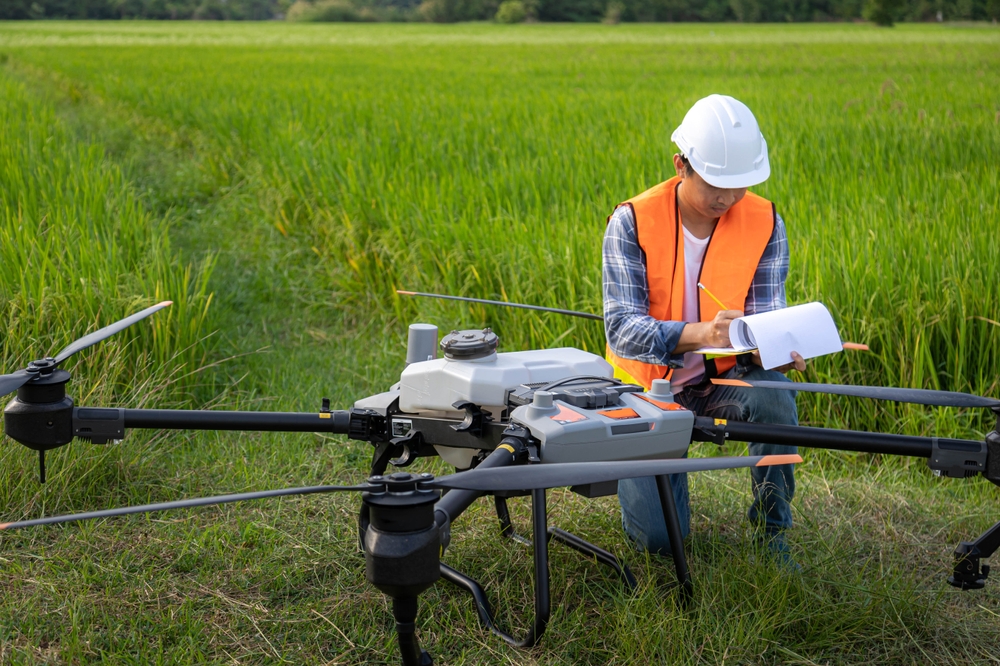Environmental Responsibility

Regulatory Compliance & Safety
Alair Ag Drones strictly follows local, state, and federal regulations, including Pesticide Use Limitation Areas (PULAs). We conduct thorough site evaluations, monitor weather conditions, and use GPS mapping to ensure precise and legal applications.
Integrated Pest Management (IPM)
While following crop consultant recommendations, Alair Ag Drones incorporates sustainable solutions that balance precision application with responsible land stewardship to keep pests away.
Precision Application with Drone Technology
Drone technology minimizes waste through pre-calculated mixing, GPS-guided flight paths, and wind-adaptive spraying. Studies show drones reduce herbicide usage, making them more efficient than traditional methods.
Dynamic and Versatile Drone Capabilities
Drones offer adjustable droplet sizes, precision spraying for liquids and dry applications. These innovations maximize effectiveness while minimizing resource use.
Eco-Friendly Practices
Electric-powered drones cut fuel emissions, while reduced water usage conserves resources. Thorough equipment cleaning prevents cross-contamination and enhance sustainability.
Commitment to Sustainable Agriculture
Alair Ag Drones integrates precision technology and sustainable practices to help farmers achieve better results while preserving the land. Our vision is to elevate agriculture.
Minimizing Environmental Impact
We take multiple steps to ensure our services are safe, responsible, and environmentally conscious:
Regulatory Compliance & Safety: We strictly adhere to all local, state, and federal laws regarding pesticide application. We meticulously inspect and follow manufacturer labels and protocols to ensure safe and effective treatments.
Environmental Risk Assessments: Before every application, we conduct thorough site evaluations, checking:
- Wind direction to prevent drift.
- Weather conditions to avoid vaporization and unintended exposure.
- Off-target concerns such as neighboring crops, residential areas, waterways, and wildlife
habitats. - Following all Pesticide Use Limitation Area (PULA) regulations
Regulatory Compliance: Researching PULAs for Legal Aerial Applications
At Alair Ag Drones, compliance with federal and state regulations is a top priority in every aerial application we perform. One crucial aspect of ensuring legal and responsible spraying is researching Pesticide Use Limitation Areas (PULAs) before any application.
What Are PULAs?
PULAs are designated zones where pesticide applications are restricted or regulated due to environmental concerns, human health risks, or the presence of protected ecosystems, water sources, or sensitive crops. These areas are established by the EPA, state agricultural departments, and other regulatory bodies to ensure that pesticide applications are conducted safely and responsibly.
How We Ensure Compliance with PULA Regulations
Before any aerial application, our team:
- Identifies PULAs in the treatment area by cross-referencing federal, state, and local regulatory maps.
- Reviews product labels for specific restrictions related to PULA zones, ensuring that all pesticide applications comply with legal guidelines.
- Uses GPS Mapping & Flight Planning Software to establish precise buffer zones, preventing overspray into protected areas.
- Stays Updated on Regulation Changes—We actively monitor state and federal updates to ensure we always operate within legal parameters.
By conducting thorough PULA research and compliance checks, we ensure that every application is legally sound, environmentally responsible, and aligned with industry best practices. At Alair Ag Drones, we are committed to precision, safety, and legal compliance—protecting both growers and the land they cultivate.
Integrated Pest Management (IPM) Approach: While we always follow crop consultant recommendations, we also are well versed in additional sustainable solutions, including:
- Mechanical control techniques.
- Cultural practices to reduce pest pressure.
- Alternative pesticide options, such as natural oils and biological treatments.
By integrating precision application with responsible land stewardship, we ensure that our operations maximize agricultural efficiency while minimizing environmental impact.
How Drone Applications Reduce Chemical Use & Waste
Drone technology has revolutionized chemical application efficiency, significantly reducing waste compared to traditional spraying methods.
Precision Application = Less Chemical Waste
- Traditional sprayers often result in overuse of pesticides, leading to excess chemical exposure, environmental runoff, and wasted product. Our advanced drone technology eliminates this issue by providing highly accurate, data-driven application techniques:
- Pre-calculated pesticide mixing—only the exact amount needed for each field is applied.
- Controlled, GPS-guided flight paths—ensuring chemicals are applied only where needed, with no overspray onto unintended areas.
- Wind-adaptive spraying—adjusting in real time to optimize application based on shifting wind conditions.
- Row-independent flight capability—drones can spray in any direction for maximum efficiency, unlike traditional row-based sprayers.
- Traditional sprayers often result in overuse of pesticides, leading to excess chemical exposure, environmental runoff, and wasted product. Our advanced drone technology eliminates this issue by providing highly accurate, data-driven application techniques:
Research-Backed Efficiency & Safety
Recent studies highlight the advantages of drone technology in precision pesticide application:
- Research from Virginia Tech shows that Unmanned Aerial Systems (UAS) can effectively manage weeds in areas difficult for traditional equipment, reducing overall herbicide usage while improving accessibility to wet fields and late-season weed growth.
- A study published in the Journal of Agricultural and Food Chemistry found that drone applications significantly reduce operator exposure to pesticides, making the process safer and more efficient than handheld spray equipment.
These studies reinforce that drone-based spraying not only improves efficiency but also reduces chemical waste and environmental impact.
Dynamic, Versatile Technology
Drones are far more adaptable than traditional spraying equipment. Our technology allows for:
- Custom droplet sizes—from ultra-fine mist to large, drift-resistant droplet that are adjustable at a moment’s notice, even mid-flight.
- Precision spraying for liquids and dry applications, including:
- Fertilizers
- Granular Insecticides and Herbicides.
- Cover crops
- Additional drone attachments that provide solutions like:
- Releasing beneficial insects to naturally combat pests.
- Weight lifting and payload transport for agricultural operations.
- Bird Deterrents for Vineyards and Orchards.
These innovations allow us to customize every treatment for maximum effectiveness, while using fewer resources and eliminating unnecessary waste.
Eco-Friendly Initiatives & Sustainable Technology
At Alair Ag Drones, we actively implement eco-friendly practices to further reduce agriculture’s environmental footprint:
- Lower Fuel Consumption:
- Traditional tractors and aircraft require large amounts of fuel for spraying.
- A study by Zero Emission Northwest found that switching to drones saved one farm 1,000 gallons of fuel and nearly 40 gallons of oil annually.
- Our electric-powered drones drastically reduce emissions, creating a cleaner, more sustainable agricultural solution.
- Reduced Water Usage:
- Conventional spraying methods use excessive water per acre – 10-20 gallons of water – to deliver treatments.
- Drone applications reduce water usage to just 2-5 gallons per acre, significantly cutting down on resource waste. This is accomplished by the propeller wash from the drone pushing product down and into each plant covering all of the surfaces rather than just laying it over the top.
- Better pesticide absorption—Fewer gallons of water per treatment means the pesticide remains at its optimal pH balance, increasing effectiveness without requiring stabilizers or acidifiers, which add extra costs and potential negative chemical interactions.
- Zero Cross-Contamination Policy:
- After each application, we perform a thorough drone and equipment cleaning to prevent chemical cross-contamination between fields and crops.
- Future Sustainability Developments:
- We are actively researching drone-mounted systems that can release beneficial insects, allowing farmers to reduce synthetic pesticide use naturally.
- Future thermal and multispectral imaging integrations will allow for early pest detection, ensuring farmers only apply treatments when and where they are needed.
A Future of Sustainable Agriculture
At Alair Ag Drones, we believe that agricultural success and environmental responsibility go hand in hand. By utilizing precision technology, reducing waste, and adopting sustainable solutions, we help farmers achieve better results while preserving the land for future generations.
Together, we’re not just farming—we’re elevating the status quo for a cleaner, more sustainable agricultural future.
